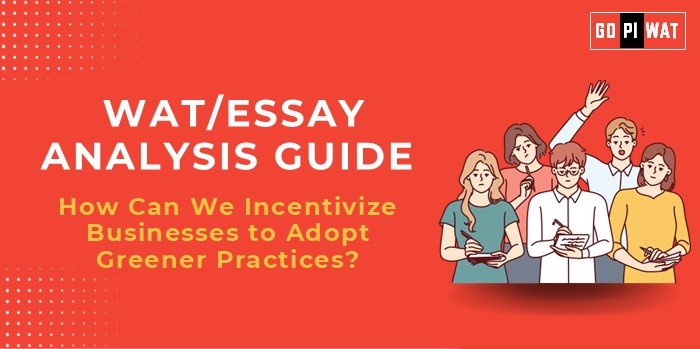🌍 Written Ability Test (WAT) / Essay Analysis Guide
✨ Understanding the Topic’s Importance
Corporate sustainability connects to broader themes like climate action, economic growth, and global competitiveness. For B-school students, this topic offers insights into strategy, finance, and leadership.
🕒 Effective Planning and Writing
- Time Allocation:
- Planning: 5 minutes
- Writing: 20 minutes
- Review: 5 minutes
- Preparation Tips: Note relevant data (e.g., green bond trends) and key stakeholders.
✍️ Introduction Techniques for Essays
- Contrast Approach: “While global ESG investments exceed $35 trillion, corporate sustainability efforts in developing nations remain inadequate due to high costs and weak incentives.”
- Solution-Based Approach: “Incentivizing businesses with green tax credits and subsidies offers a dual solution to climate challenges and economic growth.”
📖 Structuring the Essay Body
- Achievements: Cite success stories like Canada’s carbon tax and the RE100 initiative.
- Challenges: Highlight barriers like cost and regulatory uncertainty.
- Future Outlook: Discuss integrating AI in green innovation and global best practices.
✅ Concluding Effectively
- Balanced Perspective: “Incentives alone cannot achieve sustainability; they must be paired with robust regulation and technological innovation.”
- Global Comparison: “By learning from countries like Denmark and Norway, nations can design effective incentive systems for greener businesses.”
💡 Recommendations for Sustainable Progress
- Strengthen global regulatory frameworks.
- Enhance green financing options like bonds and ESG funds.
- Increase R&D support for eco-friendly innovations.
📝 Sample Short Essays (100 words each)
- Balanced Perspective: “Incentives like green bonds and subsidies have accelerated corporate sustainability efforts, yet challenges like high costs persist. A holistic approach integrating regulation, incentives, and innovation is essential to drive meaningful change.”
- Solution-Oriented: “Tax incentives, renewable energy subsidies, and ESG investment platforms offer practical solutions for businesses to adopt green practices. Governments must align these incentives with strict regulatory frameworks to ensure accountability and lasting impact.”
- Global Comparison: “Countries like Denmark and Norway illustrate how strategic incentives drive sustainability. By combining financial incentives with policy coherence, businesses globally can transition to eco-friendly practices effectively.”


